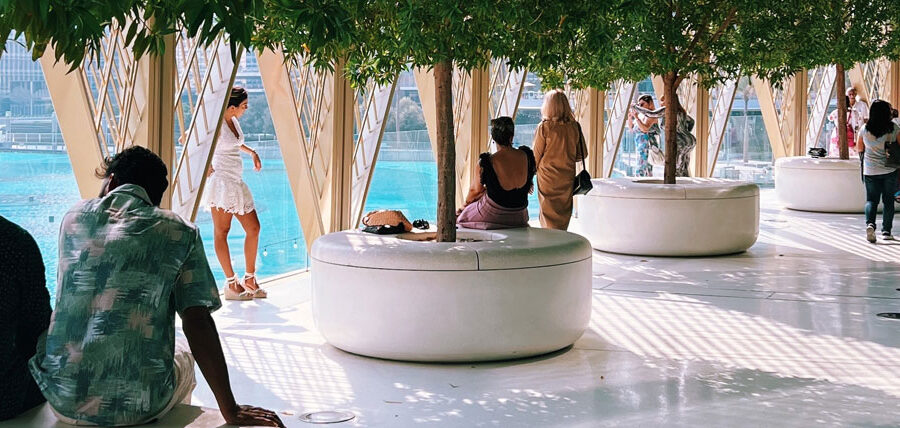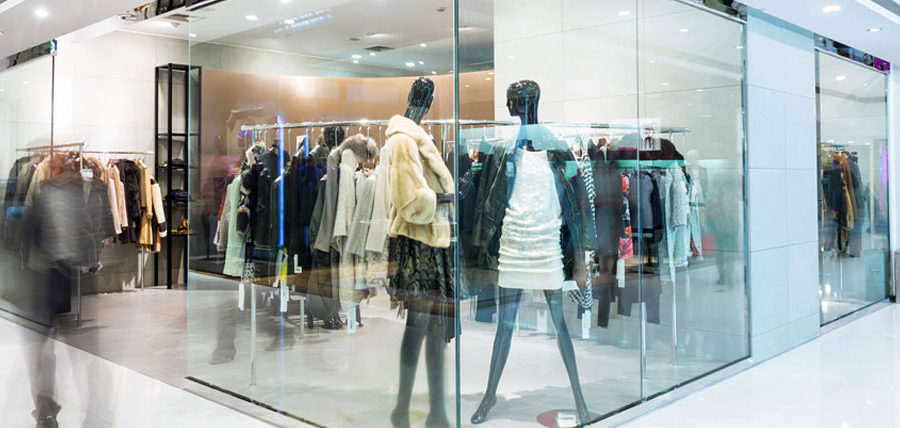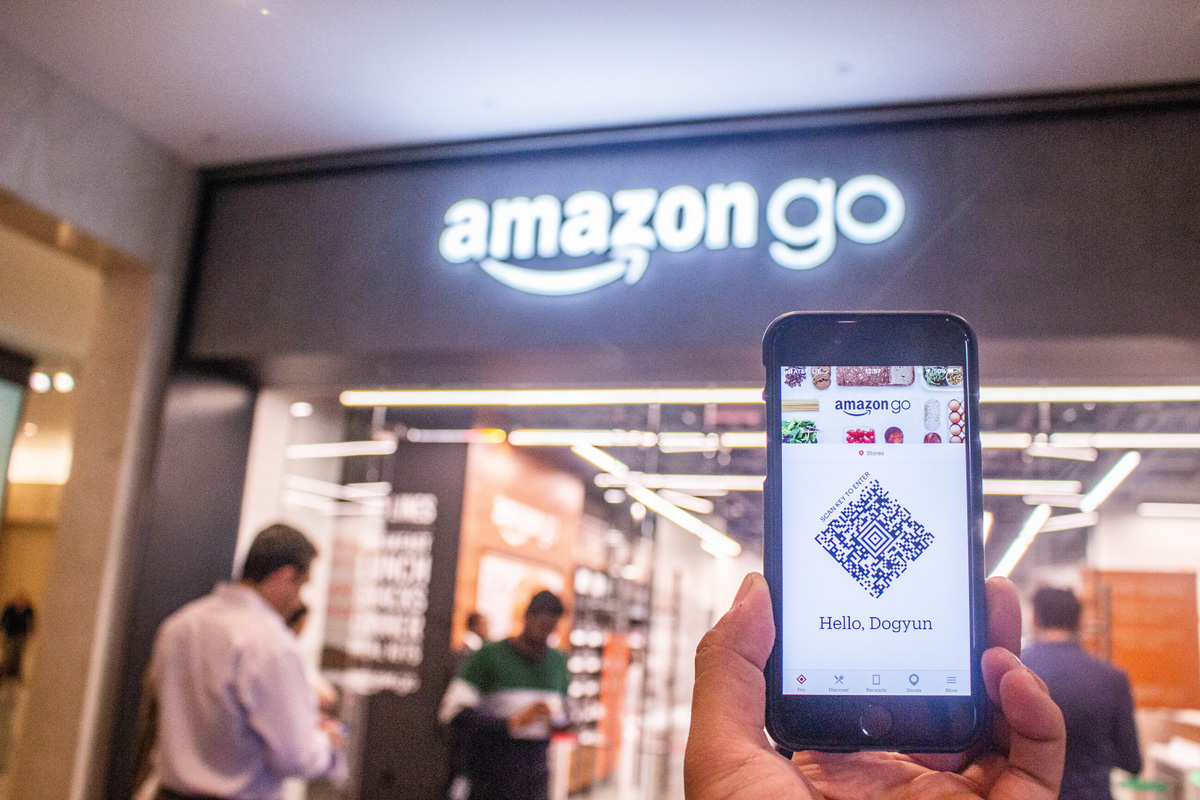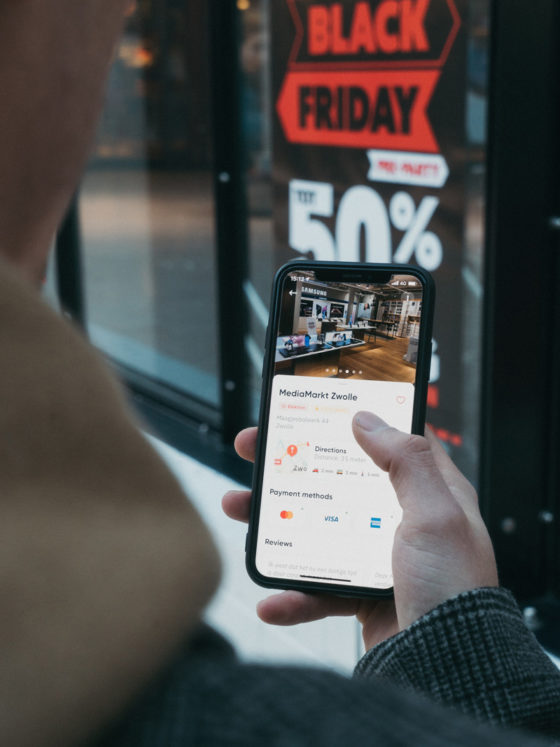Amidst the towering urban landscape, a quiet revolution in building design and construction is unfolding–one that goes beyond aesthetics and focuses on the essence of human well-being. While brick and mortar is often thought of as static and unyielding, looking at retail spaces through a human-centered-design lens, we see incredible potential to create healthier, and more liveable, shoppable, and workable spaces. By considering human health in building design, construction, and management of retail spaces, retailers can contribute to a healthier future for us all.
The wellness economy stood at $4.4 trillion in 2020, according to a report from the Global Wellness Institute (GWI), of which $275 billion came from the Wellness Real Estate sector. The sector has a projected annual growth rate of 16.1% through 2025, thanks to increased consumer awareness following the pandemic about the critical role that external environments play in our physical health and well-being.
The GWI defines the Wellness Real Estate Sector as “the construction of residential and commercial/institutional properties that incorporate intentional wellness elements in their design, materials and building, as well as their amenities, services and/or programming.”
There is great potential to create healthier retail spaces wherein employees and customers thrive. So what makes a retail space ripe for wellness-centered improvements? And will the investments pay off?
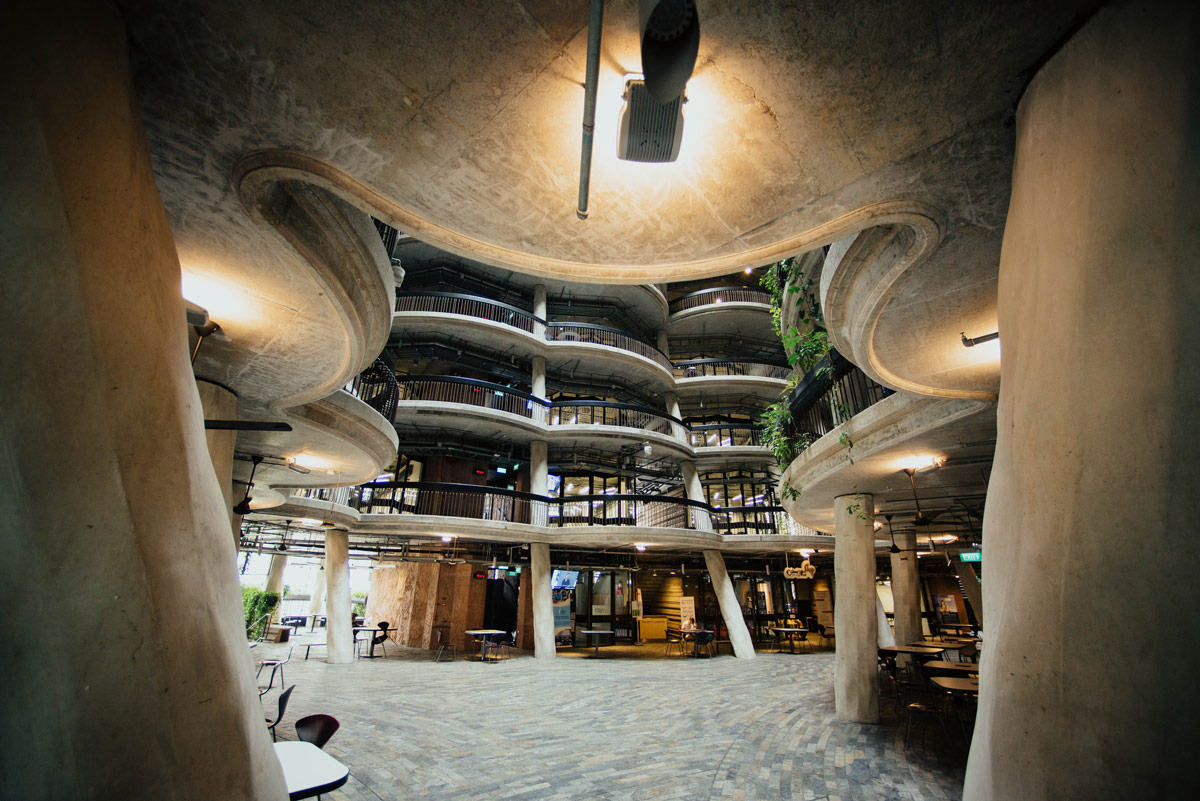
Certifying Well-Being
Although you’ve probably heard of LEED, or Leadership in Energy and Environmental Design certification, there are newer accreditations in the wellness real estate space–WELL Certification (from the International WELL Building Institute, or IWBI) and Fitwel Certification (created by the U.S. Centers for Disease Control and Prevention and the U.S. General Services Administration).
Although all certifications focus on using healthy, sustainable construction practices and building operations, WELL and Fitwel focus more on the relationship between a building and its occupants’ health and wellness, while LEED focuses more on environmental impact and sustainability.
WELL, which is also available in the home building industry, takes a more comprehensive and stringent approach with rigorous requirements and an emphasis on indoor environmental quality that translates well to an entire shopping center; whereas, single or even a fleet of retail spaces may be better served by the Fitwel certification, which is an American standard known to be more flexible and less costly.
Each certification has its own unique focus and criteria, so choosing the most suitable one will depend on the specific goals and priorities of your retail project.
Critics of the WELL Building Standard and other wellness real estate certifications claim they represent an overhyped, high-cost way for companies to “tick boxes” for recognition, rather than a genuine commitment to creating healthier spaces. Regardless of whether a company or homebuilder meets all the criteria for the standard, proponents say the goal is to move the needle further, democratizing human-centered design.
“Our goal is not just to sell a bunch of certifications,” said IWBI CEO Rachel Hodgdon in an interview with Axios. “Our goal is … can we look back 15 years from now and say the average home is built differently because of the work that we did on this system, regardless of whether they have a WELL score or not.”
Healthy Buildings as Retail Strategy
Today’s values-based, wellness-minded consumers demand retailers to do more than preach their beliefs; they want to see retailers put it into action. And getting healthy-building certified is one way to show tenants and shoppers that you are doing more than just listening.
Take it from Tanger Factory Outlet Centers Inc., one of thousands of real estate companies executing a post-pandemic strategy to promote long-term wellness and safety. The company achieved the IWBI’s WELL Health-Safety Rating for its 36 North American shopping centers and its North Carolina-based corporate headquarters in early 2023.
The designation, “defines health leadership related to cleaning and sanitation, emergency preparedness, air and water quality and other facilities management criteria.” The goal: to ensure consumer and employee comfort and safety and “build confidence that our facilities are a safe place for communities to gather,” said Tanger EVP and COO Leslie Swanson in a statement.
IWBI says it is enrolling an average of nearly 4 million square feet of projects per day in WELL Certification initiatives, with active engagements with more than 20 percent of the Fortune 500, including retail destinations like Tanger outlets, the offices of corporate giants like Goldman Sachs, Accenture and EY, and iconic structures like the Empire State Building and Yankee Stadium.
ROI and Wellness Real Estate
Although we know that healthier buildings significantly improve worker satisfaction, wellness, and productivity, it can be trickier to quantify the financial benefits of certification for landlords—even when the value proposition of healthy buildings seems clear.
In a healthy building, a retailer is better positioned to survive the next pandemic while maximizing wellness for its staff and shoppers alike in the meantime. It’s also a way to differentiate your properties, remain competitive, and prepare for the future.
“Real estate owners are driving demand for healthy buildings as they seek to retain tenants and strengthen leasing activity in a time when the pandemic still casts a long shadow on occupancy,” said Wendy Feldman Block, executive managing director for the global real estate advisory firm Savills to triplepundit.com. Now, she says, many property owners and occupiers with portfolios are budgeting for certification. “Landlords know they have to talk about what they’re doing to protect health and safety. They have to be competitive.”
Wellness Real Estate Realized
A Chic Showroom
The Mohawk Group Showroom in New York City is LEED Gold and WELL Platinum certified and incorporates features like biophilic design elements, incorporating natural daylight throughout the building, stocking healthy food for employees and guests, enhancing acoustic comfort, ensuring better air quality indoors and incorporating a living wall. The “designer-focused high-performing, sustainable commercial flooring company” also offers employees complimentary off-site gym memberships.
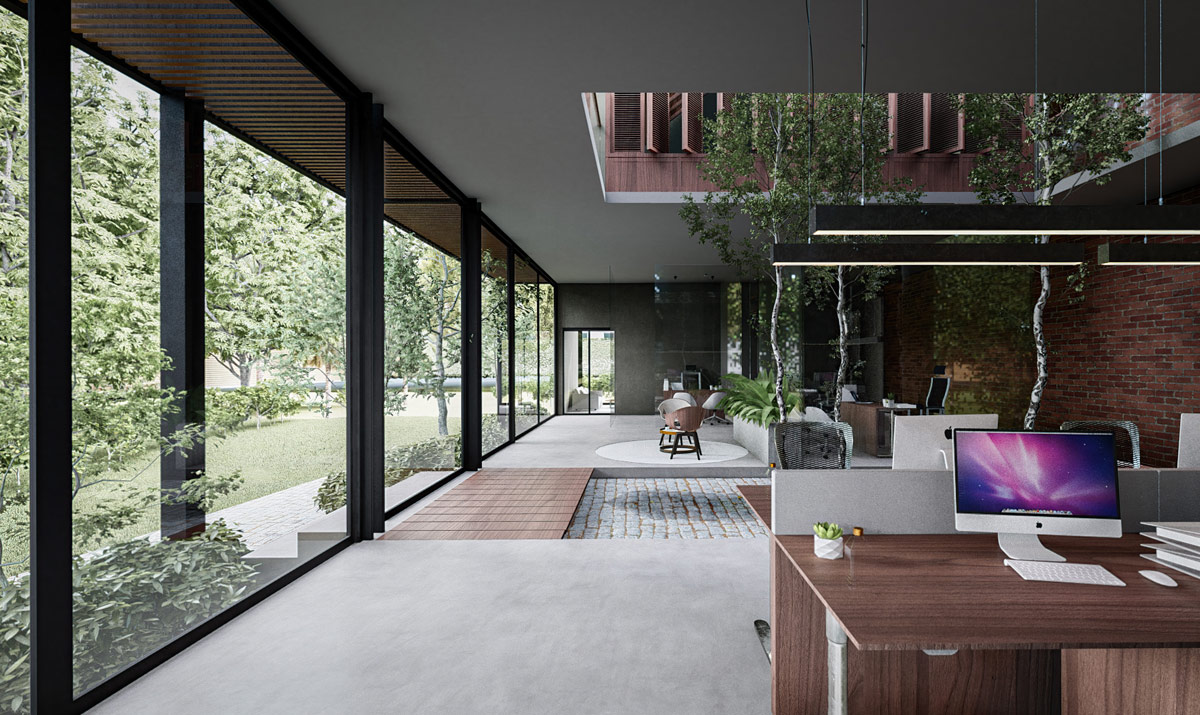
A ‘Mega Lifestyle’ Retail Fleet
City’super became the world’s first supermarket to achieve WELL Certification at the Gold level in 2018, with an eye toward both marketing and wellness for shoppers and employees. “Our vision was not only to differentiate the store from the marketplace, but also to promote health and sustainability in the retail industry,” said President of City Super Group, Jiahua Wu. “To win the WELL award is a great achievement; we were dedicated to green living through seven dimensions: air, water, light, nutrition, fitness, comfort, and spirit.”
With healthy buildings a non-negotiable for the mega lifestyle retailer, they prove they mean business by offering a desirable experience for shoppers “who enjoy the finer things in life” at their stores in Hong Kong, Mainland China, and Taiwan.
A Cutting-Edge Mixed-Use Building
With all of the wellness real estate considerations as table stakes, a new retail and office building takes wellness real estate to the next level. A new addition to Atlanta’s Ponce City Market will open in early 2024 with Pottery Barn taking over an 18,000 square-foot space at the new 619 Ponce building. Once built, its developers expect it to be net-zero carbon ready, LEEDv4 Core & Shell certified and Fitwel certified.
The building, with 87,000 square feet of office space and 27,000 square feet of retail space, was designed as a mass timber structure to prioritize the use of human health by minimizing chemicals of concern and supports the local economy by sourcing materials, including timber, from within 100 miles where possible. Mass timber typically comes from Canada, Austria, or Germany, design-focused real estate investment and management firm Jamestown owns and sustainably manages more than 100,000 acres of U.S. timberlands it uses in construction.
According to Real Estate Weekly, the project is “a great example of how true architectural and structural design collaboration, along with engaging local timber suppliers, can lead to a highly creative and efficient mass timber design.”
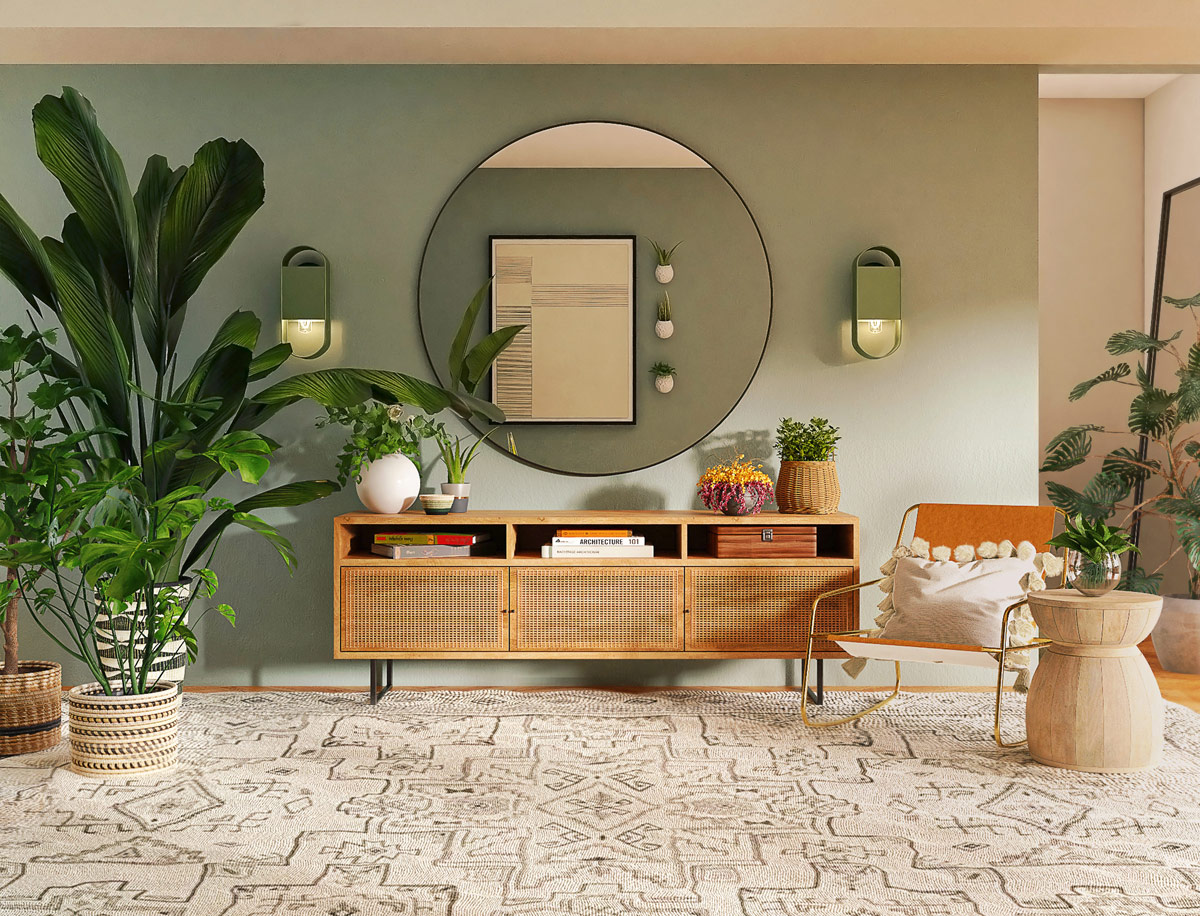
Empowering Wellness, Inspiring Retail
In pursuit of a healthier tomorrow, WELL and FitWel have emerged as guiding lights for the retail industry, transforming spaces and redefining what it means to live and work in a human-centered space. By embracing the forward-thinking principles behind WELL and Fitwel concepts, retailers have a unique opportunity to create environments that prioritize the health and vitality of both employees and customers.


